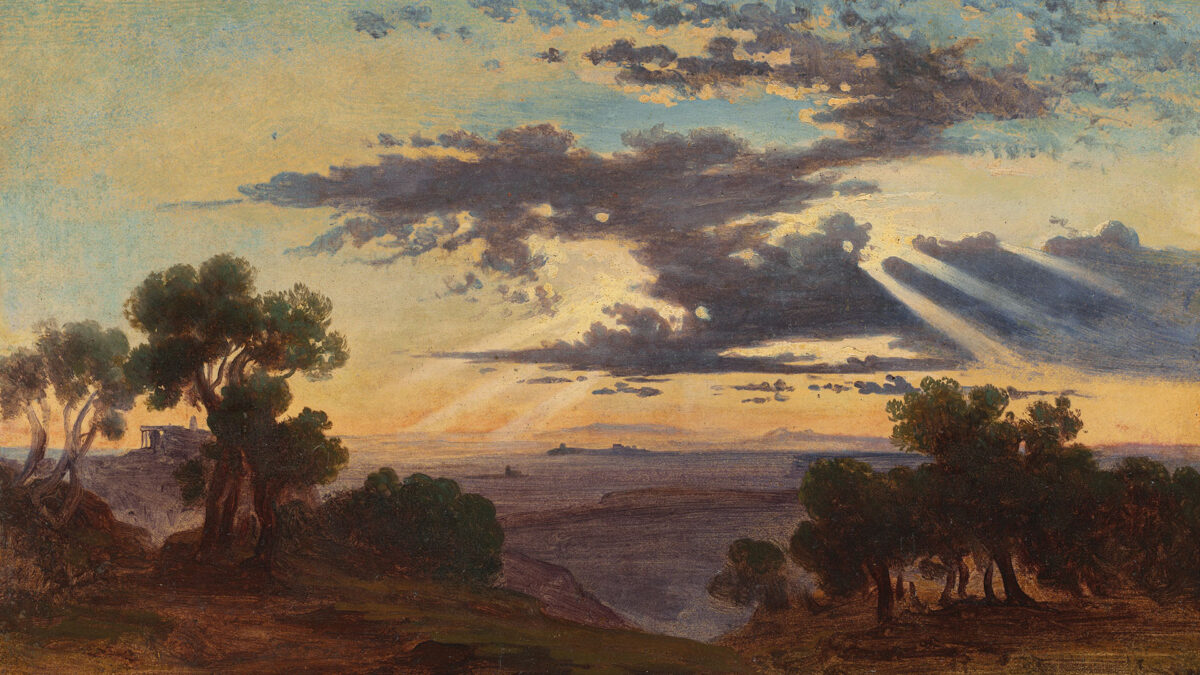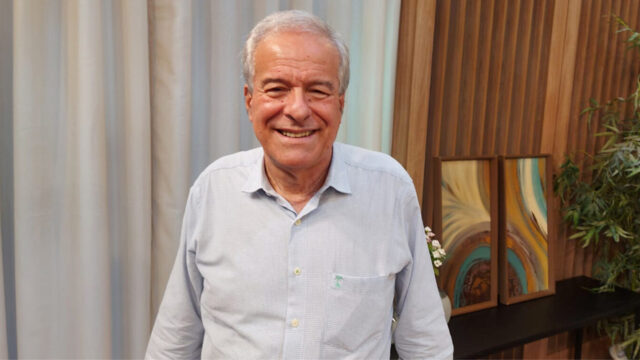Beauty touches hearts that words cannot reach.

Years ago, while studying in Brazil, I was sick and stayed in the dorm instead of going to Friday night chapel. That evening, alone, I walked quietly down the hall, went downstairs, and gazed out a huge picture window. There, in dazzling splendor, was a gorgeous sunset. I admired the large billowing clouds on the upper tier, outlined with the gold of the sun, its rays penetrating the clouds and the hills below. That image was burned into my memory partially because I felt God calling me through the beauty of His sunset—the aesthetic beauty of His artistic creation.
Later that school year my teacher became frustrated with my sketching instead of “paying attention” to her lectures, when, in fact, it was my way of paying attention. In no uncertain terms she told me in front of my classmates that I was a daydreamer and would amount to nothing in life, except making worthless art. Devastated, after class I ran to that same window and sensed God’s presence again speaking to me through nature. But that experience provided an overwhelming sense of insecurity about my future.
Throughout my life God faithfully demonstrated to me how important art is to Him. Eventually I completed graduate degrees in theology and art, while God consistently reaffirmed the role He had for me to play in sharing His love for art with others. Today I teach art and art history in the largest school of visual art within the Seventh-day Adventist educational system.
Many of the students I have engaged with have experienced misunderstanding or even rejection about their drive to produce art—similar to my own experience. Parents may wonder about the artistic calling of their children. Even the church is often suspect of young passionate artists who want to serve and bring their gifts to bless others.
GOD LOVES BEAUTY
God’s love for art is one of His greatest attributes as evidenced in His creation and Christ’s vocation as a tektōn, or “craftsman,” when He lived on earth. Ellen White noted that “it was Christ who planned the arrangement for the first earthly tabernacle. He gave every specification in regard to the building of Solomon’s temple. The One who in His earthly life worked as a carpenter in the village of Nazareth was the heavenly architect who marked out the plan for the sacred building where His name was to be honored.”¹
The Bible dedicates nearly 50 chapters with extravagant descriptions of the art and architecture of the sanctuary. Bezalel and Oholiab were the first artisans set aside by God, who filled them “with the Spirit of God, in wisdom and understanding, in knowledge and all manner of workmanship, to design artistic works, to work in gold and silver and bronze, in cutting jewels for setting, in carving wood, and to work in all manner of artistic workmanship” (Ex. 35:31-33). Together they engaged in building the sanctuary with Christ, the original artist, and were faithful to His calling.
How strange then that aesthetics is so often misunderstood in the church!
The nineteenth century Dutch impressionist painter Vincent Van Gogh wrote to family that he felt “called” by God, but largely rejected by his Christian community. In a letter to his mother and brother Theo, Van Gogh wrote that God had sent him to preach the gospel to the poor, but that he must “first have it in his own heart.”² Van Gogh learned that God beautifully expresses His love through art. He believed God’s beauty, as seen through nature, is one way that brings us to a sublime experience of life, in line with the revealed truths found in Scripture.
The Greek word aisthetikos implies that we can come to know through perception and our senses. True aesthetics can be a life-generating force given to us by God. This knowledge is incomplete but serves as the first attraction that beckons us to desire God (Rom. 1:20). When Van Gogh’s pastoral ministry was misunderstood by the official Dutch Reformed Church, he took up art as a way of expressing his deepest religious convictions. He claimed, “Our purpose is self-reform by means of a handicraft and of intercourse with Nature—our aim is walking with God.”³
Van Gogh was filled with selfdoubt about his artistic calling and lived a life in obscurity, hardly selling any paintings. Van Gogh’s deep depression might eventually have led to his death. From a shallow “prosperity gospel” perspective, Van Gogh was unsuccessful, and many contemporaries could have doubted God’s blessing during his lifetime. Yet Van Gogh sought to be faithful to God’s calling deep within his soul. Today millions, both secular and religious, flock to museums around the world to experience the wonder and beauty of God’s creation he so desperately tried to paint onto his canvas. Someday he may know the impact of his life’s work.
GOD CALLS US THROUGH BEAUTY
As I reflect back on that view from the picture window in Brazil where I sensed God’s calling for my life, I think today about the hundreds of students I have taught who also feel the calling to become artists. I have come to understand and appreciate art so much more and have concluded that aesthetics can be one of the most powerful languages God uses to call people into a relationship with Him. When we answer God’s call for making art, we participate in worship. This form of worship is more attractive to postmoderns because they thirst to see truth applied in unexpected and sincere ways. Because of modern media, our worshipful approach to art can reach people in a way that is unprecedented. For art to have power it has to be true, and, similar to Van Gogh’s experience, it has to penetrate “the surface of things and portray them as they really are.”⁴
¹ Ellen G. White, Christ’s Object Lessons (Washington, D.C.: Review and Herald Pub. Assn., 1900), p. 349.
² Johanna van Gogh-Bonger and Vincent Willem van Gogh, eds., The Complete Letters of Vincent van Gogh, 3 vols. (Greenwich, Conn.: New York Graphic Society, 1959), letter 94.
³ Ibid., Letter 377.
⁴ Philip Graham Ryken, Art for God’s Sake: A Call to Recover the Arts (Phillipsburgh, N.J.: P & R Publishing, 2006), p. 39.








